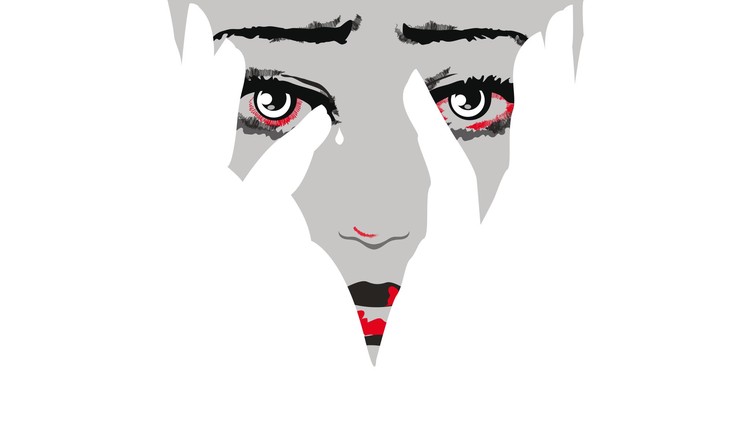I was recently asked to contrast my views on psychosis and recovery with those offered by NAVIGATE, a US government (NIMH) sponsored program aiming to guide early intervention programs for psychosis. This inspired me to inquire into what NAVIGATE does tell people and families about psychosis and recovery. What I found, unfortunately, was quite disturbing.
Navigate presents itself as a very humanistic program, with the goals of “helping people work toward personal goals and recovery. More broadly, the NAVIGATE program helps consumers navigate the road to recovery from an episode of psychosis, including supporting efforts to function well at home, on the job, at school, and in the social world.” The emphasis of the program is broad enough to include “Supported Employment and Education, Individual Resiliency Training (IRT), and Family Education.”
Unfortunately, while these mostly progressive components have value and may help some toward recovery, NAVIGATE includes them alongside a basically toxic collection of blatant misinformation about psychosis which is likely to have the opposite effect.
(I should note that what I write here is based on my review of specific sections of the Navigate Family Education Manual. As far as I know other educational materials produced by this program may be not quite as bad; though it is also possible that they may also be worse. What I do know is that the family manual is terrible enough to suggest the program as a whole is way “off course” from where it should be.)
Early on in my review of that document, I encountered this declaration, prominently made in a text box on page 92:
“Psychosis is nobody’s fault: People do not cause it.”
Wow, really? People “never” contribute anything to causing psychosis? Believing that requires completely ignoring what is now a vast collection of evidence that shows that adverse childhood experiences, including various forms of child abuse, do play a large role in making later psychosis more likely. That isn’t to say that people abusing other people is the only possible cause, but this claim by NAVIGATE that people never have anything to do with causing it is simply inexcusable.
The dishonesty of this statement sets my cynical side to wondering: did child rapists and other abusers of children pay NAVIGATE to so brazenly exonerate them from being blamed for contributing to later experiences of psychosis in so many of their victims?
And providing this sort of misinformation doesn’t just benefit abusers and minimize the importance of fighting child abuse as a way to prevent psychosis; it also makes it more difficult for people who have experienced such abuse to understand what happened to them and to work toward recovery. Even though their extreme experiences may be an understandable reaction to terrible things that happened to them, they are told there is no relationship whatsoever, and that the blame should go to their “psychotic illness.”
When children are abused, they are usually prevented from telling their story. Being forced to keep what happened and all the feelings about it secret then alienates them from others and from themselves. This alienation can later contribute to developing psychotic experience. When professionals tell people that their psychosis has nothing to do with the abuse they experienced, they are contributing to the same process that the abuser began, just “piling on” more alienation, more lies, more abuse.
And even when the psychosis is not a response to experiences of child abuse, it can still be the result of various interpersonal events and personal reactions to those events, a result of various conflicts and misunderstandings. When professionals tell people the psychosis is definitely not the result of any such events, the result is still more alienation that contributes to psychosis and makes recovery more difficult.
So why is NAVIGATE telling this kind of lie? I imagine, if confronted, they might explain that not everyone who becomes psychotic was abused, and they don’t want parents to blame themselves when perhaps they did nothing wrong, and also they don’t want people to blame themselves for becoming psychotic. Isn’t it better, they might ask, when no one feels blamed?
Well, no. It is true that inaccurate or exaggerated forms of blame can be very unhelpful. But placing blame where it belongs is the way we make sense of things, it’s how we learn to get in control of what we are doing and where we are going. Identifying the way others hurt or confused us helps us get a sense we could seek out better relationships in the future, with better outcomes. Identifying our own mistakes also allows us to become responsible for the direction of our life in the future. We are only completely “blameless” for negative outcomes when we are completely helpless, and by telling people that no one’s behavior had anything to do with causing psychosis, a sense of helplessness is conveyed that is actually a huge barrier to recovery.
A better approach is for professionals to be uncertain about what happened to cause the psychosis and what is going on now, and to support everyone in exploring possible viewpoints or understandings, in a way that supports taking personal responsibility for mistakes but also seeks to avoid inaccurate or excess attributions of blame or responsibility.
But when professionals are uncertain, people and their families may come up with a variety of different understandings, and they might not arrive at a certainty that a psychiatric framework best describes what is happening and they might not decide that drugs are critical to making things better. And that, apparently, is not acceptable to NAVIGATE.
So readers of the family education manual are informed, for example, that the duty of mental health workers is to “legitimize the psychiatric disorder” (p. 22). This is framed as something kind and helpful to do for someone – the “symptoms” that are being experienced, we are told, are simply beyond the person’s conscious control, “trying hard” to change things does not work, and so people must be taught to understand them is as part of a “psychiatric disorder.”
I do agree by the way that simply “trying hard” to overcome difficult experiences etc. often fails – but we don’t need the concept of a “psychiatric disorder” to explain why that happens. People often lack understanding of what is happening in their mind, and the things they then try to bring their mind under control not only often fails to work, but actually makes things worse! Trying to control thoughts or voices for example often makes them become more intrusive. And then as things get worse, people try even harder, resulting in escalating problems, creating a vicious circle. It is this vicious circle which then seems so uncontrollable, and is easily framed as illness. But the fact that people’s misguided efforts don’t make things better is not proof that nothing will work. A better approach is to simply notice that life and our minds can be tricky, and people may need help figuring out what does work to manage things, but there usually is a way to do so even if it has not yet been discovered.
What people don’t need is “helpers” persuading them to give up trying to understand themselves or relate to their own experience, and convincing them to see psychiatric frameworks as the only “legitimate” way of comprehending their condition.
But getting back to the NAVIGATE manual: once people have been convinced that the psychiatric diagnosis is “legitimate” then the next step apparently is to convince them it is definitely “biological.”
So people are first informed that “According to the stress-vulnerability model, psychiatric illnesses have a biological basis.” (p. 93). And then “because both biological vulnerability and stress contribute to symptoms, treatment for psychiatric symptoms needs to address both of these factors.” (p. 94).
It is interesting to note that the stress-vulnerability model as first introduced did not describe vulnerability as always biological; it instead described people as possibly having vulnerability due to a number of factors, which might range from something genetic to many other factors, including such things as unresolved childhood trauma to dysfunctional beliefs. The notion was simply that when vulnerability was higher, it would take less current stress to push a person toward psychosis. As such, it was a reasonable and I believe helpful theory. Unfortunately, this reasonable theory was soon distorted by biologically focused propagandists to frame vulnerability as always biological and further, always as something known to be certainly present in everyone who becomes psychotic. The NAVIGATE program is unfortunately choosing to propagate the distorted version of the theory.
One way of challenging this distortion is to simply ask to see the research that shows that there is in fact a type of human being invulnerable to getting psychosis. Of course there isn’t, and since as far as we know anyone could become psychotic when exposed to enough stress etc., then no one’s experience of psychosis can be taken as proof they have a greater degree of biological vulnerability than does anyone else.
And even if a person does have a specific biological vulnerability, there is no proof that treatment needs to “address that factor” as the NAVIGATE document claims. To better understand this point, consider a person with fair skin, which can be understood as a biological vulnerability to sunburn. There is no need to modify the person’s skin to avoid future episodes of sunburn – modifying environmental/lifestyle factors can provide a complete solution. It seems perfectly possible that the same sort of approach could work for any biological vulnerabilities to psychosis.
But there is no room in the NAVIGATE model or educational materials for conceptualizing a rational approach to psychosis without a “biological” treatment. To make sure drugs are prioritized, NAVIGATE even stoops to the old “biochemical imbalance” myth:
“Scientists believe that the symptoms are caused by a chemical imbalance in the brain.” (p. 101). And “Medications reduce biological vulnerability by helping to correct the chemical imbalance in the brain.” (p. 102).
If NAVIGATE had simply informed us that “some” scientists believe that the symptoms of psychosis are caused by a chemical imbalance in the brain, and that many others don’t, then there wouldn’t be much ground for criticism. But instead they try to convince us that a scientific consensus exists around a notion of biochemical imbalances which actually lacks even realistic evidence, and then they frame the drugs as handily “correcting” the problem, even though the actual evidence suggests the drugs create a biologically abnormal state of suppressed dopamine, and that this in turn causes the brain to shrink, etc.
It is in fact a blatant fraud to convince people that a consensus exists about drugs reversing a known biochemical imbalance, when in fact that consensus does not exist and when better information suggests that the drugs suppress “symptoms” in only a minority of those who take them, and may in fact not only be ineffective in causing more good than harm in the short term, but also reduce chances of recovery in the long term.
Recovery, as you might recall, is supposed to be the primary aim of the NAVIGATE program. Interestingly though, in the educational materials I reviewed, significant effort seems to go into reducing expectations for recovery! The document speaks of the importance of “imbuing interactions with hope” (p. 5) but then the best possible outcomes they can cite are that “perhaps” as many as 20% might go on to live “relatively symptom free lives” (p. 6) and the possibility that “a small minority of persons with first episode psychosis (perhaps 10-20%) can live successfully even off medication.” (p. 114).
If NAVIGATE is really attempting to help clinicians “imbue interactions with hope” then they might try drawing numbers from, or even referencing, research that provides a bit more room for hope. For example, they might point to the Vermont Study, which found that about 34% of a population of people who had been considered chronic and severe cases were able to be living successfully in the community, off mediation, 20 years later after being helped by a psychosocial approach. Of course, if 34% of a “chronic” population can live successfully off antipsychotics, we would expect that a much higher percentage of people with first episode psychosis would be able to do so. They might also mention research into Open Dialogue, finding that over 80% of people experiencing first time psychosis were living “relatively symptom free” at a 5 year outcome point, with less than 20% taking antipsychotics.
We don’t know where the NAVIGATE authors found their tiny estimates of how many might be able to fully recover and live without drugs. But we do know that the overall effect of minimizing people’s chances for recovery, while also convincing people they are definitely biologically different in a way they can’t manage without drugs, is to discourage belief in the possibility of working toward true and complete recovery.
What is emphasized instead is the possibility of what might be called “recovery but still sick.” The emphasis is on helping people reduce their expectations, so that they will aim only at having some successes in the lives despite continuing to have a biological mental disorder, and will resign themselves to believing they need drugs to correct their “biochemical imbalance.”
I do see lots of value in efforts to help people have a full life despite whatever difficult experiences they might continue to have – and I know that getting support in this way often does help people a lot. But it’s just sad to see what are otherwise good ideas about how to help people being presented mixed in with poisonous lies designed to make people feel more helpless about managing and making sense of difficult experiences, and pushing them toward increased reliance on drugs. People deserve honest and balanced information on these topics that allows them to make informed decisions for themselves, not lies designed to push them in a specific direction.
By writing this blog post, I hope to shame NAVIGATE, and NIMH which has supported it, into correcting their educational materials, so that people experiencing psychosis and their families have a chance to become honestly informed about what is and is not known about the sorts of troubles they are having, about chances for recovery, and what might be helpful and harmful as they try to work toward that recovery.
If you are interested in supporting ting this effort, please consider supporting this petition addressed to NAVIGATE and its sponsor, NIMH. Thanks!






NIMH is saying what the families of people experiencing “psychotic states” want it to say. The families with financial resources have organizations and professionals backing them up while the “psychotic” individuals have nothing. Attempts made to provide support for these individuals quickly sink into oblivion as soon as the person trying to do so is unable to continue due to illness, etc. And their voices need to be heard every bit as much as “voice hearers” voices need to be heard. Instead of just a few random individuals, the entire “alternative” community of professionals and “recovered” people should be supporting efforts to provide safe places where these “psychotic” people can meet and talk and be heard. It seems to me at this time that the professionals and “recovered” people are only supporting efforts to have their own voices heard even though they don’t even need to “organize” to provide help to those in the community needing it–organizations like MFI already exist that desperately need support. But they are not receiving support from a community of people who are spending all their time critiquing the psychiatric community. In a word, behaving like just another institution that doesn’t really want to solve the problem because then it would no longer be needed and might cease to exist.